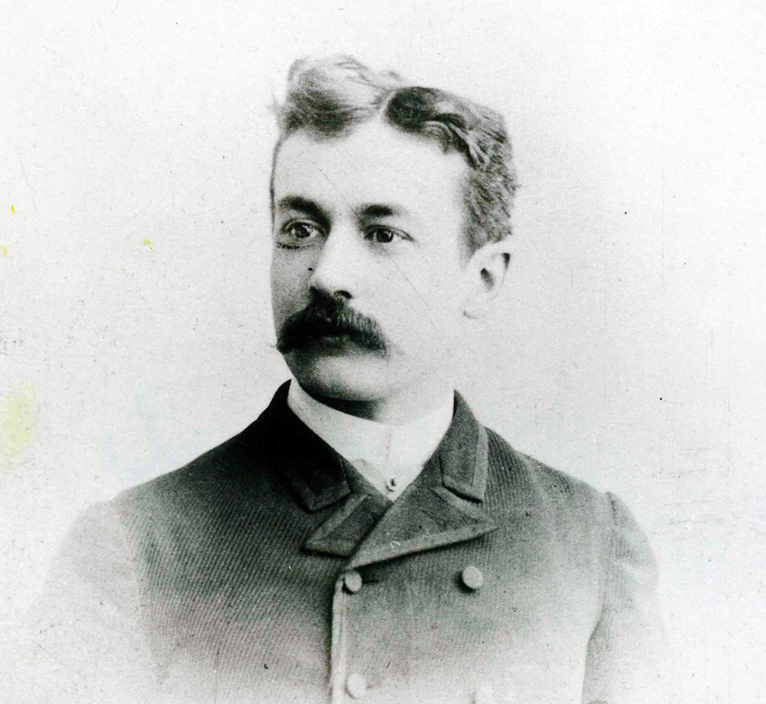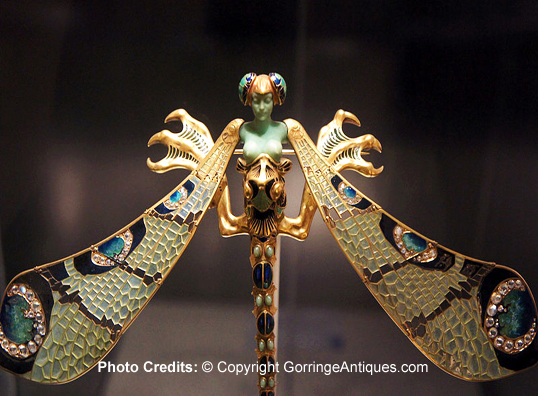Born April 6th, 1860, in France, René Lalique is one of the world’s greatest glass makers and jewellery designers of the art nouveau and art deco periods.

In 1876, following the death of his father, René Lalique served an apprenticeship with Louis Aucoc, a leading Parisian jeweller and goldsmith. He studied at the École des Arts Decoratifs in Paris. Later, he moved to England and spent two years studying at the School of Art, in Sydenham. Whilst enrolled on the courses his graphic design skills were greatly improved, and his naturalistic approach to art was developed further.
In 1882, when Lalique returned from England he became a freelance designer for top jewellery houses in Paris, such as Cartier, Boucheron, Jacta and Gariod. In 1885, he took over Jules Destapes’ atelier in Paris and established his own jewellery workshop designing innovative jewellery pieces made from semi-precious stones, ivory, horn, enamel and glass. By 1890, René Lalique was recognised as one of France’s foremost art nouveau jewellery designers, creating items for Siegfried Bing’s new Paris shop, La Maison de l’Art Nouveau. Siegfried “Samuel” Bing was a German-French art dealer who was very influential in introducing modern artwork and Japanese art to Europe and in developing the art nouveau style in the late 19th century through his gallery in Paris.

19th Century Dragonfly Jewellery Piece Designed by Rene Lalique

Having reached the height of success making jewellery Lalique wanted to expand his repertoire into the glass making field, in 1898 he established a workshop devoted purely to glassware. In 1907, Lalique began creating stylish perfume bottles for the famous perfumer François Coty and other perfumers. He later became well-known for his frosted glass vases, first produced in 1926, Lalique also designed car macots. Throughout this period Lalique’s factory only produced glassware there was no use of crystal.
During his career, the craftsmanship of René Lalique was highly sought after. To name a few, he was commissioned to produce Art Deco glass angels for St Matthew’s Church in Millbrook, Jersey, known as “The Glass Church”. By the late 1930’s René Lalique had designed the chandeliers and lighting columns in the first-class dining room of the iconic SS Normandie ocean liner, the interior decoration of the Côte d’Azur Pullman Express carriages, and even glass doors for Prince Yasuhiko Asaka’s residence in Tokyo, and the Galerie des Champs-Elysées in Paris.
Following the death of René Lalique in 1945, his son Marc acquired the business and introduced new Lalique crystal designs. By the early 1950’s they had completely eradicated glass production. Nowadays, the Lalique company is synonymous with crystal and continues to produce beautiful decorative glass and jewellery pieces.
René Lalique’s early 20th century antique glass vases, jewellery and decorative glass is still highly collectable today. In 2012, an antique glass vase made by Rene Lalique in 1922 sold for £280,000 at a sale by Newcastle auctioneers Anderson & Garland. It was the record price for a Lalique vase paid by an American collector. The works of Rene Lalique can be seen at international museums such as The Lalique Museum (Musée Lalique) in France, the Victoria and Albert Museum in London, the Metropolitan Museum of Art in New York, and the Musée d’Orsay in Paris.


